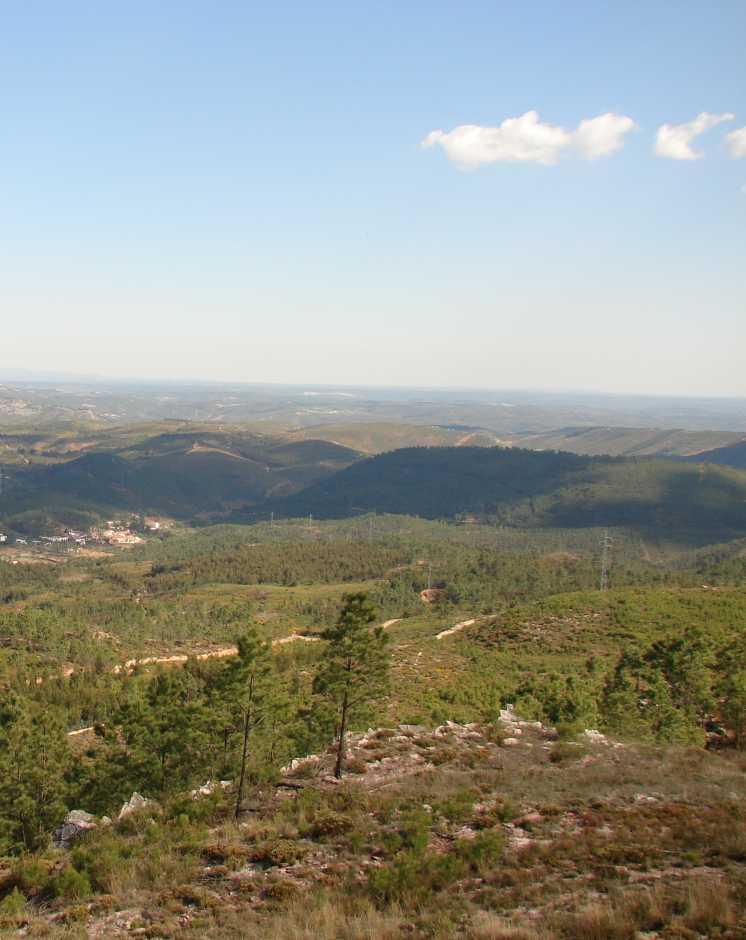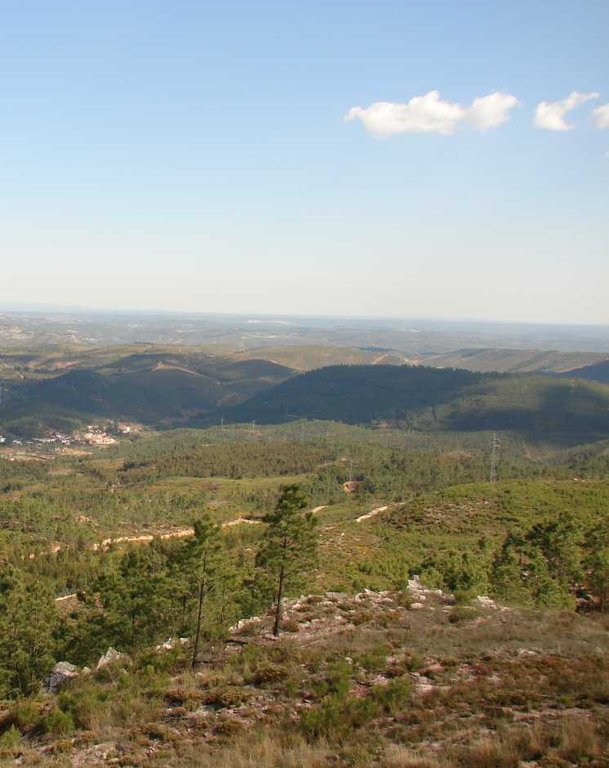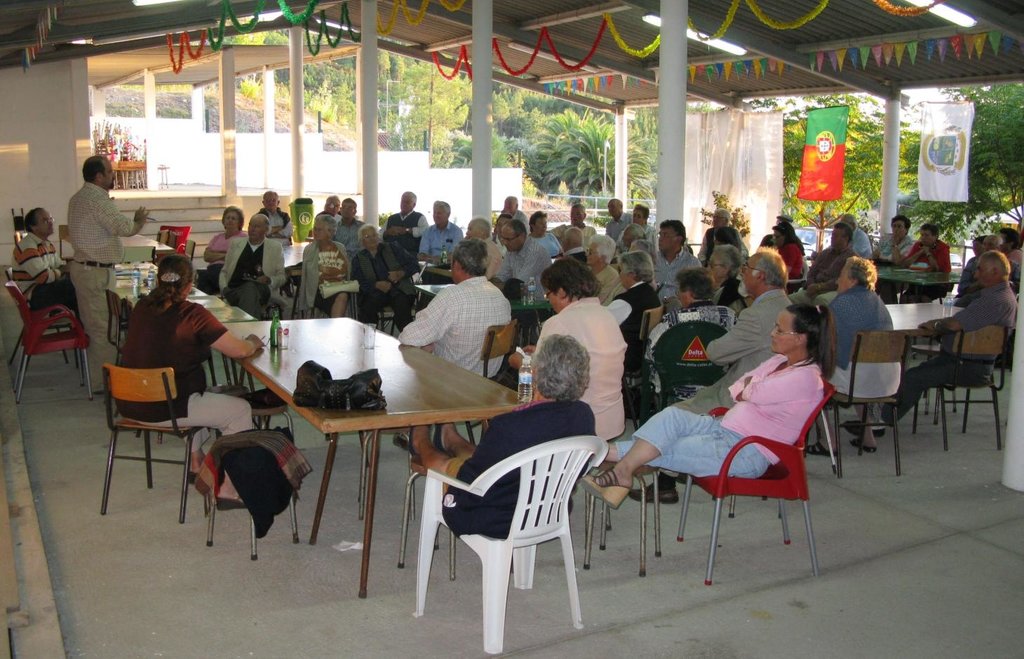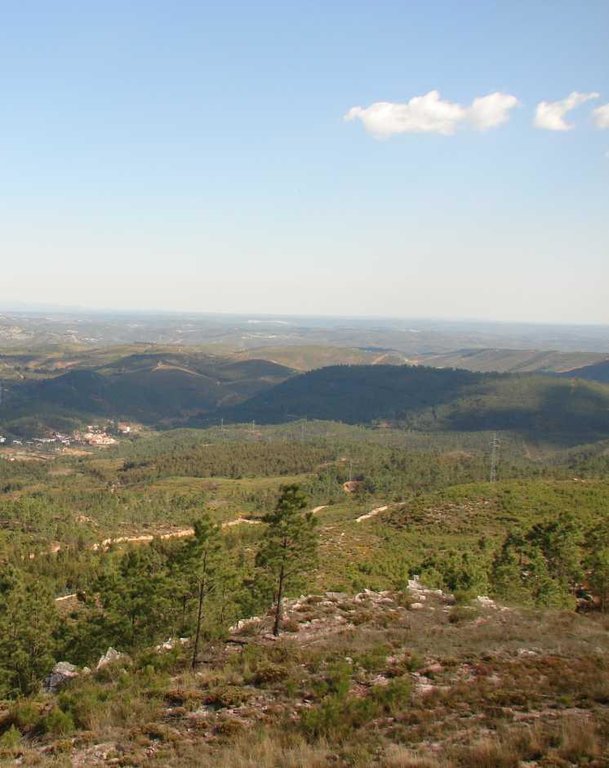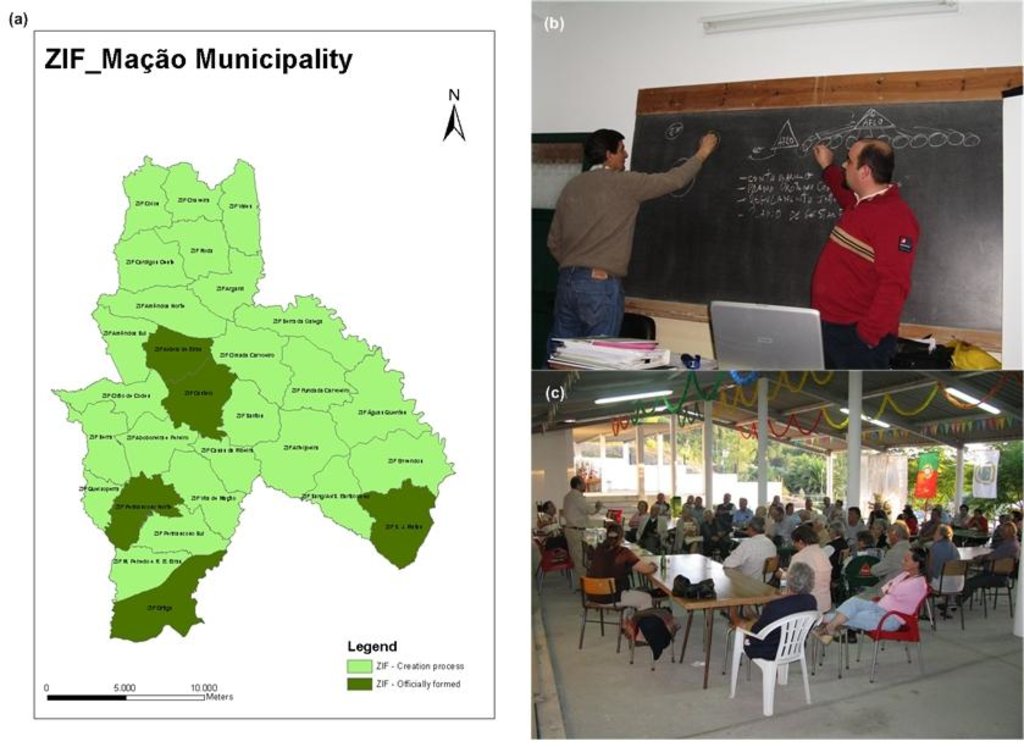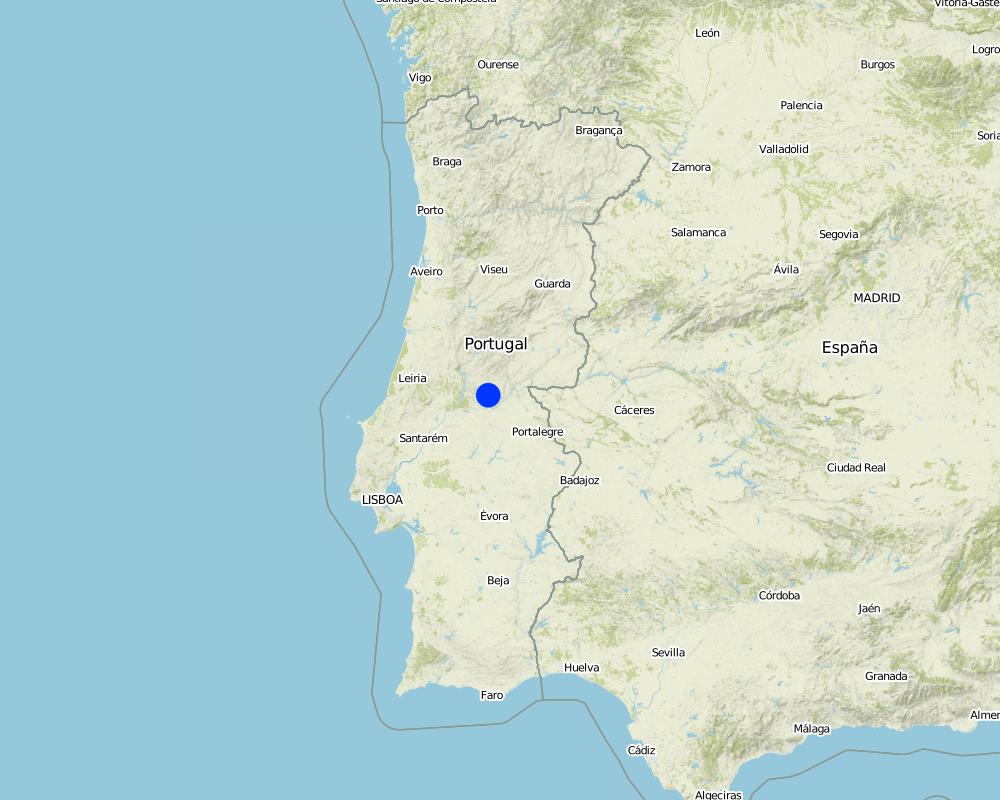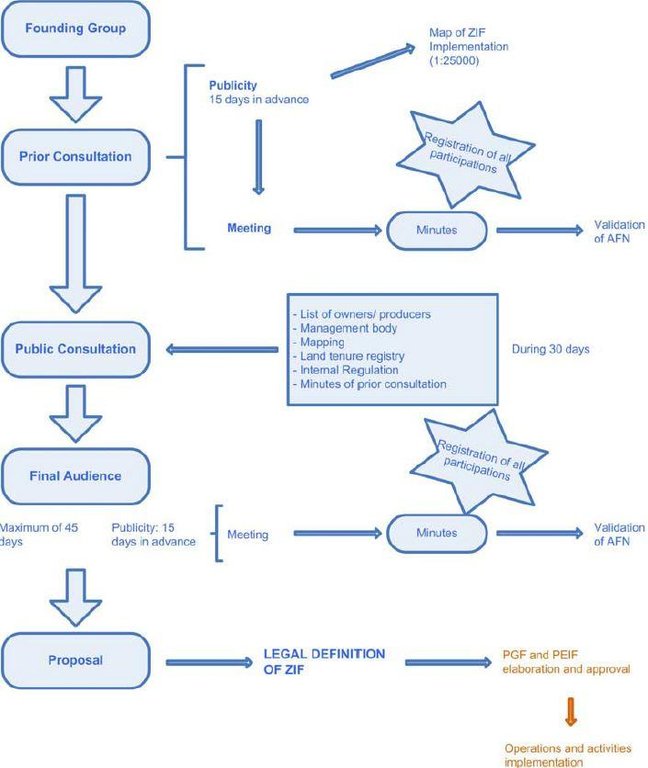Forest Intervention Area (ZIF) [Portugal]
- Creation:
- Update:
- Compiler: Celeste Coelho
- Editor: –
- Reviewer: Fabian Ottiger
Zona de Intervenção Florestal (Portuguese)
approaches_2588 - Portugal
View sections
Expand all Collapse all1. General information
1.2 Contact details of resource persons and institutions involved in the assessment and documentation of the Approach
SLM specialist:
Name of the institution(s) which facilitated the documentation/ evaluation of the Approach (if relevant)
University of Aveiro (University of Aveiro) - Portugal1.3 Conditions regarding the use of data documented through WOCAT
When were the data compiled (in the field)?
10/02/2009
The compiler and key resource person(s) accept the conditions regarding the use of data documented through WOCAT:
Yes
1.4 Reference(s) to Questionnaire(s) on SLM Technologies
2. Description of the SLM Approach
2.1 Short description of the Approach
Forest Intervention Area (ZIF) is a territorial unit, where the main land use is forestry. This approach assembles and organizes small forest holders and defines a joint intervention for forest management and protection. Defined by law in 2005, and revised in 2009, each ZIF of private forest has to include at least a contiguous area of 750 ha, 50 landowners and 100 forest plots, and has to be managed by a single body, defined by ZIF members.
2.2 Detailed description of the Approach
Detailed description of the Approach:
Aims / objectives: The ZIF overall objective is to promote the efficient management of forest and to mitigate current constraints of forest intervention (e.g. land size and tenure). Other objectives are to develop structural measures for fire prevention, to integrate local and central administration actions and to implement the national and regional forest management policy at the local level. The final purpose of ZIF areas is to improve productivity in rural forest areas, contributing to rural development
Methods: The idea emerged after the catastrophic wildfires of 2003 and was developed and presented by a group of stakeholders (landowners, forest associations, City Council, among others) to the Ministry of Agriculture, Rural Development and Fisheries. The ZIF approach was legislated by Law 127/2005, and revised under Law 15/2009. Each ZIF assembles small properties, which will be jointly managed by a single entity, which can be a non-profit-making and voluntary organization or some other group of people approved by the forest owners. Each ZIF will have a Forest Management Plan (PGF), where the forestry operations and activities for ZIF area are defined accordingly to the guidelines of the Regional Plan for Forestry Management and Planning (PROF), and a Specific Plan to Forest Protection (PEIF), which includes actions to protect forest against biotic and abiotic risks. The management entity should have a team with qualifications and experience in forestry and with technical ability to design these plans.
Stages of implementation: The legal constitution of ZIF includes six mandatory steps, namely the constitution of the founding group (group of landowners with at least 5% of a continuous area inside the ZIF), the prior consultation meeting, the public consultation, the final audience meeting, the proposal submission to the National Forest Authority (AFN) and legal publication of each ZIF (already done). After these procedures, the PGF and PEIF of each ZIF will be designed by the management entity and evaluated and approved by AFN. The implementation activities can then be implemented by the management entity or by individual landowners following the rules described on the plans. PEIF validity is five years and PGF validity is 25 years (still in preparation). [See figure below].
Role of stakeholders: The founding group is mainly composed of forest owners and producers and is the starting point for creating a ZIF. The management entity administers the ZIF in order to achieve their main purposes and the aims defined on the plans. AFN will support and monitor ZIF activities. ZIF non-supporting landowners are obliged to have a PGF for their land, as well as to accomplish the PEIF of the ZIF.
Other important information: The landowners inside the ZIF who are non-supporters do not have a clear role. Based on PROF - Plano Regional de Ordenamento Florestal (Regional Plan for Forestry Management and Planning), for ownerships of > 25 ha, the owners are obliged to have a PGF - Plano de Gestão Florestal (Plan for Forestry Management) for their property.
2.3 Photos of the Approach
2.5 Country/ region/ locations where the Approach has been applied
Country:
Portugal
Region/ State/ Province:
Santarém
Further specification of location:
Mação
Map
×2.6 Dates of initiation and termination of the Approach
Indicate year of initiation:
2003
2.7 Type of Approach
- project/ programme based
2.8 Main aims/ objectives of the Approach
The Approach focused mainly on other activities than SLM (The main objective is to increase land management and profitability)
- To promote the sustainable management of forest; - To coordinate the protection of forest and natural areas; - To reduce the conditions to fire ignition and spread; - To coordinate the recovery of forest and natural areas affected by forest fires; - To give territorial coherence and effectiveness to the action of local administration and others actors.
The SLM Approach addressed the following problems: - lack of forest planning and management, forest fires, land structure and tenure, land abandonment, rural depopulation and ageing.
2.9 Conditions enabling or hindering implementation of the Technology/ Technologies applied under the Approach
social/ cultural/ religious norms and values
- hindering
Social resistance to this approach. Landowners fear to lose tenure rights. Difficult to reach and find owners due to inheritance and out-migration. Rural depopulation occurred in the last decades.
Treatment through the SLM Approach: Financial support, creation of new job opportunities in rural areas.
availability/ access to financial resources and services
- hindering
High implementation cost.
Treatment through the SLM Approach: Governmental incentives
institutional setting
- hindering
Scepticism about the practical effects of this approach. Very high costs for implementation and lack of private investment
Treatment through the SLM Approach: ZIF pilot areas will motivate implementation and investment into other ZIFs.
legal framework (land tenure, land and water use rights)
- hindering
Land structure and tenure (private holdings)
Treatment through the SLM Approach: Minimum area to constitute a ZIF is 750 ha
The existing land ownership, land use rights / water rights greatly hindered the approach implementation The ZIF join small properties and their management is undertaken as a single property, guide by a forest management plan. This entity can be a non-profit and voluntary organization or an other group of people approved by the forest owners and/or producers.
3. Participation and roles of stakeholders involved
3.1 Stakeholders involved in the Approach and their roles
- local land users/ local communities
Gender: mixed, Age: 50 years old
The majority of forest owners are usually pensioners, with low incomes
- SLM specialists/ agricultural advisers
AFLOMAÇÃO technicians
- private sector
Private organizations
- local government
- national government (planners, decision-makers)
Municipality
If several stakeholders were involved, indicate lead agency:
Based on an initial idea from Mação local specialists; the national ZIF legislation emerged in 2005 and was revised in 2009
3.2 Involvement of local land users/ local communities in the different phases of the Approach
| Involvement of local land users/ local communities | Specify who was involved and describe activities | |
|---|---|---|
| initiation/ motivation | interactive | Balance alternatives and take decision to test the agave forestry information sessions about ZIF approach; informal contacts, door-to-door approaches and formal agreement of the landowners to become ZIF members. |
| planning | passive | information sessions to present the ZIF plans (PGF and PEIF). |
| implementation | interactive | management activities can be made by the land owners or by the ZIF management entity. Regular meetings with ZIF members |
| monitoring/ evaluation | interactive | not defined yet |
| Research | interactive | on-farm research, good practice demonstration and collaboration with research projects. |
3.3 Flow chart (if available)
Description:
Legal process related with the ZIF constitution (blue)
Elaboration and approval of the ZIF plans (orange)
Implementation of the plans (orange)
3.4 Decision-making on the selection of SLM Technology/ Technologies
Specify who decided on the selection of the Technology/ Technologies to be implemented:
- mainly SLM specialists, following consultation with land users
Explain:
Users’ perceptions and expectations were also considered.
Decisions on the method of implementing the SLM Technology were made by by SLM specialists alone (top-down)
4. Technical support, capacity building, and knowledge management
4.1 Capacity building/ training
Was training provided to land users/ other stakeholders?
Yes
- opinion leaders
Subjects covered:
information sessions and individual contacts with opinion leaders
4.2 Advisory service
Do land users have access to an advisory service?
Yes
Describe/ comments:
Name of method used for advisory service: Information sessions; Key elements: ZIF process, Explaining rational of ZIF for specific municipality and its conditions like depopulation, forest fires, etc, Elaboration of the ZIF plans; The extension system is well set up to ensure follow-up activities
Advisory service is very adequate to ensure the continuation of land conservation activities
4.3 Institution strengthening (organizational development)
Have institutions been established or strengthened through the Approach?
- yes, greatly
Specify the level(s) at which institutions have been strengthened or established:
- local
Give further details:
City council supports the forest association activities.
4.4 Monitoring and evaluation
Comments:
There were None changes in the Approach as a result of monitoring and evaluation: (* The monitoring procedures are not structured yet)
4.5 Research
Was research part of the Approach?
Yes
Specify topics:
- sociology
- economics / marketing
- ecology
- forestry, politics
Give further details and indicate who did the research:
The approach includes technical and local knowledge. The idea was prepared and presented by a group of stakeholders (landowners, forest associations, among others) to the Ministry of Agriculture, Rural Development and Fisheries and legislated by the Law n. º 127/2005, 5 August.
Research was carried out both on station and on-farm
5. Financing and external material support
5.1 Annual budget for the SLM component of the Approach
If precise annual budget is not known, indicate range:
- > 1,000,000
Comments (e.g. main sources of funding/ major donors):
Approach costs were met by the following donors: government (Permanent Forest Fund): 100.0%; local community / land user(s) (ZIF implementation activities: National Strategic Reference Framework (60%), Land users (40%))
5.2 Financial/ material support provided to land users
Did land users receive financial/ material support for implementing the Technology/ Technologies?
Yes
5.3 Subsidies for specific inputs (including labour)
- equipment
| Specify which inputs were subsidised | To which extent | Specify subsidies |
|---|---|---|
| Printer, toners, map production | fully financed | |
If labour by land users was a substantial input, was it:
- voluntary
Comments:
Landowners can work on their properties or can be substituted by the ZIF management entity. Some activities, such as the implementation of the Primary Strips Network System for Fuel Management can be supported by the municipality services.
1-technical, fully financed (FFP).2- preparation of PGF,partly financed. 3-implementation,partly financed.
6. Impact analysis and concluding statements
6.1 Impacts of the Approach
Did the Approach help land users to implement and maintain SLM Technologies?
- No
- Yes, little
- Yes, moderately
- Yes, greatly
Reduction of the number and likelihood of forest fires.
Did the Approach empower socially and economically disadvantaged groups?
- No
- Yes, little
- Yes, moderately
- Yes, greatly
It is expected that the increase in land productivity through the implemented technologies will help to improve the socio-economic situation of these rural groups.
Did the Approach improve issues of land tenure/ user rights that hindered implementation of SLM Technologies?
- No
- Yes, little
- Yes, moderately
- Yes, greatly
Did other land users / projects adopt the Approach?
- No
- Yes, little
- Yes, moderately
- Yes, greatly
The initial social resistance to the approach will diminish through the existence of a successful ZIF.
Did the Approach lead to improved livelihoods / human well-being?
- No
- Yes, little
- Yes, moderately
- Yes, greatly
Did the Approach help to alleviate poverty?
- No
- Yes, little
- Yes, moderately
- Yes, greatly
It is expected that the implementation of this approach will contribute to the improvement of rural socio-economic conditions through productivity increase, creation of employment and promotion of local products.
6.2 Main motivation of land users to implement SLM
- rules and regulations (fines)/ enforcement
- affiliation to movement/ project/ group/ networks
- aesthetic
- forest fires
6.3 Sustainability of Approach activities
Can the land users sustain what has been implemented through the Approach (without external support)?
- no
If no or uncertain, specify and comment:
The forest owners do not have the financial capacity to apply and support these activities by themselves.
6.4 Strengths/ advantages of the Approach
| Strengths/ advantages/ opportunities in the compiler’s or other key resource person’s view |
|---|
| Social conscience (How to sustain/ enhance this strength: through awareness campaigns and information sessions provided at national and local level.) |
| Prevention of forest fires (How to sustain/ enhance this strength: the increase of forest management will contribute to the decrease of large forest fires. The implementation of integrated and global measures to fire prevention will be suitable within the ZIF approach.) |
| Restoration of burnt areas (How to sustain/ enhance this strength: The use of forest species to enable the protection and recovery of degraded soils or soils with high erosion risk has a very positive influence on the rehabilitation of burnt areas. However, many of these species are not economically attractive at short or medium term. The management of the land using ZIF model will allow the definition of the most affected areas for an urgent intervention.) |
| Increase productivity (How to sustain/ enhance this strength: present land tenure and structure of forest holdings constitute a bottleneck for forest productivity. The integrated management of the ZIF will allow a better management and use of the land, increasing the exploitation of timber and non-timber products and also increasing the resilience to wildfires.) |
| Improve forest management (How to sustain/ enhance this strength: promotion of the planting of more fire-resilient species which are better adapted to the local conditions. AFN should: (i) provide information about the guidelines; (ii) develop new policies and tools, which are more suitable to the local level; (iii) support and implement public awareness campaigns about forest values and services, and (iv) provide financial support to ZIF constitution and implementation activities.) |
6.5 Weaknesses/ disadvantages of the Approach and ways of overcoming them
| Weaknesses/ disadvantages/ risks in the compiler’s or other key resource person’s view | How can they be overcome? |
|---|---|
| Unattractive investment (low public support and lack of private support) | the need to review and reform the existing QREN or provide others means of support. Incentives to private initiative or donors should be found. |
| Highly bureaucratic nature of the ZIF approach | simplification of the bureaucratic process |
| Rather complex process: unclear role for the non-adherent landowners within the ZIF; ZIF has to follow many laws and plans; control and monitoring activities still not defined | clarification and simplification of the bureaucratic process of the ZIF |
| Costs related to the approach | major financial support from the government needs to be provided. |
7. References and links
7.1 Methods/ sources of information
- field visits, field surveys
- interviews with land users
7.2 References to available publications
Title, author, year, ISBN:
Decree- Law 127/2005, 5 August. Official Gazette n. 150 - I series A.: 4521-4527Decree-Law 15/2009, 14 January. Official Gazette n. 9 - I series: 254-267AFN (2011). Caracterização das Zonas de Intervenção Florestal. Lisboa, Autoridade Florestal Nacional: 54
Links and modules
Expand all Collapse allLinks
No links
Modules
No modules


